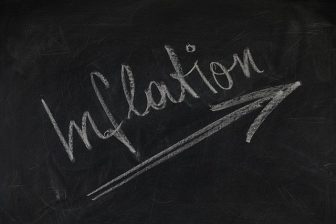 The monthly ONS house price index figures released yesterday show that UK average house prices increased by 11.8% over the year to September 2021, up from 10.2% in August. The average UK house price stood at a record high of £270,000.
The monthly ONS house price index figures released yesterday show that UK average house prices increased by 11.8% over the year to September 2021, up from 10.2% in August. The average UK house price stood at a record high of £270,000.
London has had the weakest annual price growth ay just 2.8%. The highest price growth areas are, the north-west at 16.8%; Wales at 15.4%; and the East Midlands at 14.7%.
Year on year, detached houses have seen the greatest average price growth, up 13.8%. Flats and maisonettes have achieved barely half that, at 6.5%.
With inflationary pressures mounting on the Bank of England and its future decisions in respect of interest rates, there’s a growing nervousness among commentators that whilst supply and demand factors in the residential property market are forcing up house prices at the moment, it may not be long before painful cost-of-living increases and a rise in the cost of borrowing (coming as something of a shock to those who have only ever known ‘cheap money’) will put the brakes on demand and prices.
Tom Bill, head of UK residential research at Knight Frank:
“The housing market has largely shrugged off the end of the stamp duty holiday and price growth continues to apparently defy economic gravity.
“Stronger-than-normal demand has been boosted by frustrated buyers who were unable to move during the stamp duty holiday and others who have waited for calmer conditions after its conclusion.
“Lower-than-normal supply will only pick up meaningfully next spring given how seasonal the UK housing market is. This supply/demand imbalance will support prices in the meantime.
Ultra-low borrowing costs also have also underpinned demand. Longer term, there will need to be a readjustment as mortgage rates normalise, a process that has been delayed by the pandemic.
“Interest rates were 0.75% in early 2020 before Covid struck and we wouldn’t expect any meaningful impact on prices or demand while they remain below that level.
“However, what’s different between now and early 2020 is the higher cost of living, which may cause demand to start fraying around the edges depending on how elastic the definition of “transitory” becomes in relation to inflation.”
Over 3.5 million first-time buyer mortgages have been issued since the base rate dropped to 0.5% in March 2009. That is a large group of homeowners who don’t know what it’s like when interest payments rise meaningfully.”
Jonathan Hopper, CEO of Garrington Property Finders:
“It’s tempting to see September’s dramatic acceleration in price rises as a breathless sprint finish for the Stamp Duty holiday, which finally ended in England at the end of the month.
“But the reality behind the blockbuster numbers is more straightforward. In truth the impact of the tax incentive has been waning for some months, and the market’s continued momentum in September was instead dictated primarily by the old-fashioned drivers of supply and demand.
“That’s why we’ve seen only a modest cooling of price rises in the six weeks since Stamp Duty levels returned to normal. The combination of very high demand and a chronic shortage of homes for sale continues to collide – and rising prices are the inevitable result.
“Nevertheless there’s every chance that the huge jump in prices in the 12 months to September – the second biggest seen in a decade and a half – will be the high water mark for the current boom.
“In several of the hottest regional markets, the froth is already receding and we’re starting to see some sellers trimming their asking prices as buyers take a more sanguine approach.
“With consumer inflation spiking to 14 times what it was last November, buyers’ disposable income is being eaten into by the rapidly rising cost of living. And with the Bank of England now widely expected to start notching up the cost of borrowing from next month, buyer demand is likely to be tempered further in coming months.
“The mismatch between supply and demand will keep nudging average prices upwards, but at a more measured pace than we’ve seen for much of this year.
“Buyers are becoming increasingly cautious, and more willing to walk away and wait if they feel the price isn’t right.”
Emma Cox, Sales Director at Shawbrook Bank:
“It is clear that house prices continue to be underpinned by a chronic lack of supply which shows no sign of abating.
“However, amid speculation that December may see the Bank of England finally decide to pull the trigger, and raise the base rate to combat inflation, we could see a slowdown in demand – particularly at the lower end of the market.”
Scott Taylor-Barr of Shropshire-based Carl Summers Financial Services:
“We’ve all become a bit numb to record house price rises over the past 18 months, but it’s quite possible that’s all about to change.
“With the end of the stamp duty holiday, furlough being withdrawn, soaring inflation, as announced Wednesday, and looming tax rises, the forecast for house prices is looking a lot less favourable.
“There could be a bumpy ride ahead so buckle up.”


Comments are closed.